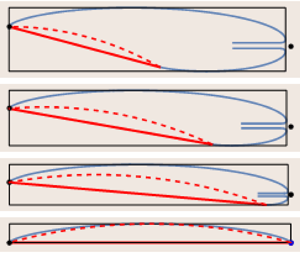Article contents
On the direction of the re-entrant jet and the limiting cavity flow configurations
Published online by Cambridge University Press: 15 February 2022
Abstract

In this paper, we investigate an old classical free streamline problem, namely, the two-dimensional re-entrant jet cavity flow past an obstacle. It is well known that for the re-entrant jet model, the direction of the jet is a free parameter that can be specified arbitrarily. To fix this uncertainty, we make a complementary conjecture: the direction should be chosen so that the mean kinetic energy of the remote part of the jet is minimal. Considering cavity flows over an oblique flat plate as an example, we show numerically that the direction is almost opposite to the incident flow. In addition, we present an analytical confirmation of this conclusion that is independent of the obstacle shape. Further, considering again the oblique flat plate as an example, we give an answer to the following question: What happens when the angle of attack tends to zero and the cavity number is finite? We demonstrate that for the limiting configurations, the re-entrant jet vanishes, and the limit is a free-surface flow with a symmetric bubble above the plate and two stagnation points on the lower side of the plate. For this limit we construct a simple exact analytical solution.
JFM classification
- Type
- JFM Papers
- Information
- Copyright
- © The Author(s), 2022. Published by Cambridge University Press
References
REFERENCES
- 1
- Cited by





